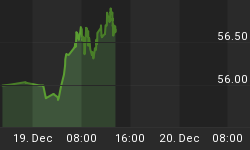Massive-valuation, loss-making startups are all the rage now, and the next IPO to make waves is going to be in the ride-hailing segment, where Lyft is set to go public before rival Uber. In fact, Lyft is listing on Thursday on Nasdaq as LYFT and will be the first hoorah of 2019’s much-anticipated IPOs.
Uber will follow suit in the first week of April, and Pinterest and Airbnb are most likely to be next on this year’s IPO list.
And while many might be asking if the market is right for these startups to go public, it’s really a moot point. After all, investor appetite is already soaring for startups that are generating huge losses, so the risk is already priced in.
Or, as DataTrek, Research co-founder Nick Colas told CNBC’s Trading Nation today: “These companies are all remarkably unprofitable. Lyft lost $900 million-plus last year, and all of these are cyclical companies, as well, unproven by an economic downturn.”
Other than the $900 billion (and change) that Lyft lost last year, what else do investors need to know ahead of the IPO?
For starters, this is shaping up to be one of the biggest IPO in the past 10 years, based on valuation.
Last week, Lyft was suggesting a valuation of nearly $23 billion. But what everyone needs to know is that Lyft has already sold all of its planned pre-IPO shares. So when it lists on Thursday, the price target is probably going to be higher.
Of course, Uber will be watching this high demand for its rival closely.
What could derail LYFT, which currently has secured almost 40 percent of the US ride-share market and gave 18.6 million people at least one ride in the fourth quarter of 2018, according to the New York Times Deal Book?
Related: De Beers To Expand World’s Most Profitable Diamond Mine
The growth has been clear. In 2016, it had 22 percent of the market.
But part of that growth has been because of discounted rides in preparation for the IPO, which its executives have been quick to warn investors about, saying “We believe that much of the growth in our rider base and the number of drivers on our platform is attributable to our paid marketing initiatives.”
And where the massive losses come into play in the growth equation is in the fact that Lyft, unlike global Uber, operations only in North America. So how much more can it grow?
The co-founders of Lyft told investors last week essentially that it will be a while before Lyft becomes profitable, though they are sure it will, eventually. The problem is that in order to compete in North America with Uber, it’s got to offer discounts and spend an awful lot on marketing.
It will become profitable, they say, but they’re also going to be investing so profits are going to have a wait.
For Lyft investors, it will have to be a long-term game, if they have the patience.
Some analysts are all in for this ride; others say it’s going to start off well and then investors will become nervous.
As quoted by the Financial Times, Triton Research co-founder Rett Wallace said “[Lyft] will move up the price and it will go like gangbusters initially and then we will have the first-quarter earnings and the disillusionment will set in.”
When Uber follows suit with its IPO, the pressure will really be on.
By Michael Scott for Safehaven.com
















